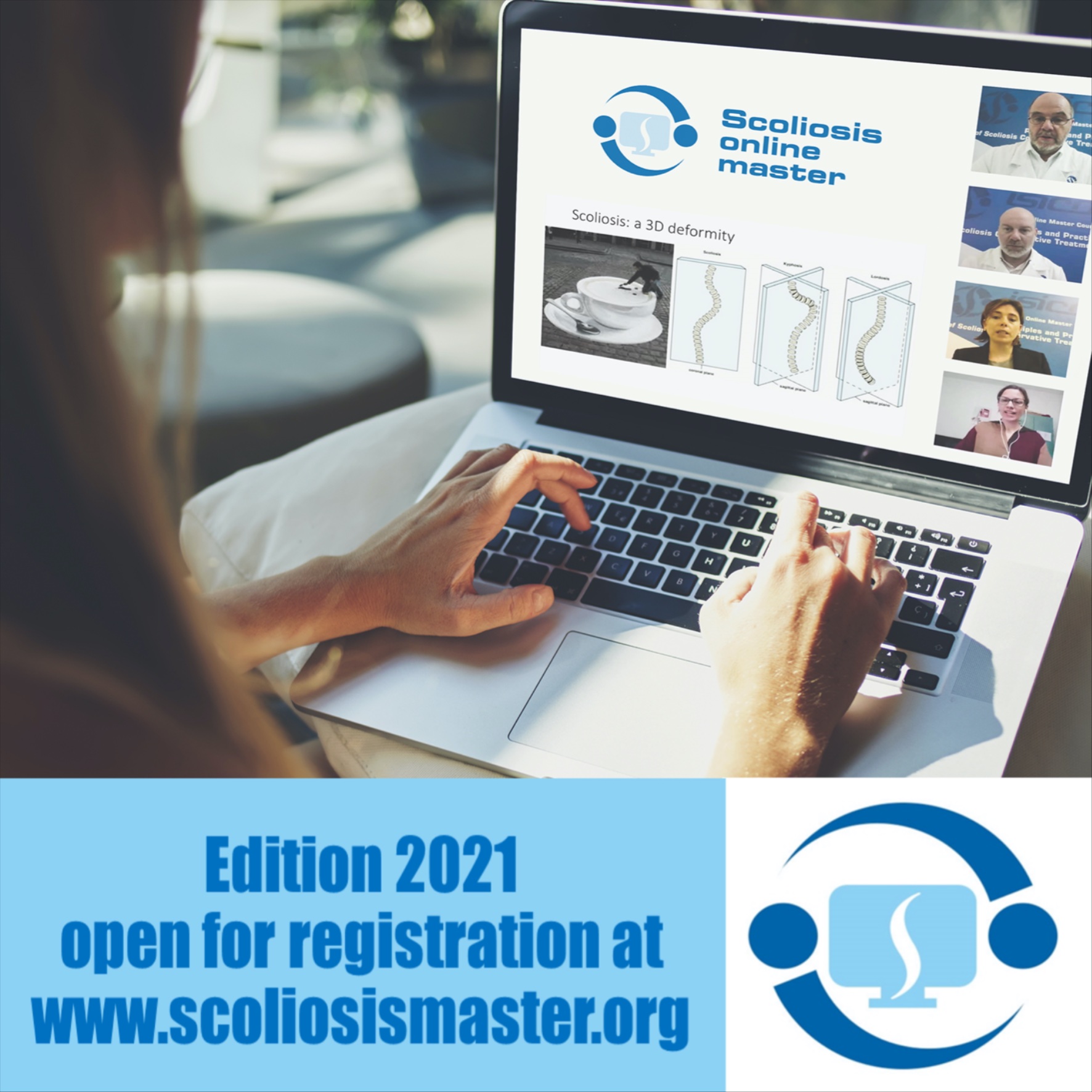.jpg)
.png)
Pain perception? It's also about the mind

A very nice patient of mine, who suffers from low back pain, recently left my studio with a prescription for a psychological consultation as well as one for specific physiotherapy sessions.
Judging by the look on her face, she
was clearly thinking "but my pain is for real, I'm not making it up!".
This is the
reaction I have also had from several other chronic patients when trying to explain the concept of "central sensitisation" to them...

World Master: open for registration!
A teaching at the highest level and a unique course where you can learn in 360 degrees how to diagnose and treat
scoliosis from infantile to adult.
Lessons given by a prestigious worldwide recognized
faculty. Self-administered from January to November except live lectures delivered 2 times a month.
All this made you curious?
Please visit www.scoliosismaster.org!


Isico APP now also for Android
We recently launched the new free version of the Isico APP for IOS, dedicated to
professionals; now, it is available for Android as well.
The Isico APP is a valuable tool for daily clinical and therapeutic activity. After downloading the APP from
App Store or Google Play, the doctor or the therapist can register and get access to useful tools such as a scoliometer, an
inclinometer, the Raimondi calculation (to measure vertebral rotation). It is also possible to visualize the possible evolution of
scoliosis, according to its natural history, based on the current Cobb angle, age, Risser sign. Try it!
Michele Romano's lecture
at the Bulgarian Congress
In the situation of COVID-19, the VIII National Congress of the Association of Physiotherapists in Bulgaria
: "Interdisciplinary approach and current trends in practice" will be held on November 13-14 in a hybrid form, because only the participants from
Bulgaria will be present in person.
The congress will also have a special section for the
treatment of scoliosis with different lectures: Michele Romano, Physiotherapy Director of Isico, will present one about Scientific Exercise Approach
to Scoliosis (SEAS).
Scoliosis Manager: update available!
The updated version 3.2 of ScoliosisManager has recently been released. We remind you that ScoliosisManager is free software, in constant evolution because it follows the continuous changes and improvements that we use in Isico for our clinical activity.
What is new in this updated version? Mainly two items: the updating of the physiotherapy evaluation tests, with the relative levels of normality and the updates in the remote and coming medical history of the patient in the clinical visit.
How to access the updated version?
Connect to www.scoliosismanager.it and start using the updated version at your disposal.

Isico on air: a new
video
A short version of the
latest episode of our monthly Facebook live program "Isico on air" is available now. Our two specialists, Dr Andrea Zonta, physiatrist, and Dr Alessandra
Negrini, physiotherapist, talked about postures when sitting at a desk and how to fight the sedentary lifestyle of
children.
We remind you that the recorded episodes of our program are available on our Youtube
channel with English subtitles.

How should I carry my brace on a plane?
The answer to those questions is easy: the best way to carry your brace is simply to keep it on.
There are several reasons why this is a good idea. First of all, it will save space in your luggage and stop you from having to worry about what bag or case to try and fit it in. Also, this way, it's much less likely to get damaged.
There is another advantage to keeping your brace on while travelling: if you do, you won't be losing any treatment hours during the day, and therefore when you arrive at your destination, you will be free to take it off for a while and enjoy a bit of freedom.
Be sure to ask your doctor, in good time, to give you a medical certificate that stresses the importance of wearing the brace even when travelling. You can present this certificate to the metal detector control so that you don't have any problem even when you go abroad.
If you are travelling by train or plane it is a good idea to try and get an aisle seat, so that you can get up for a little walk every now and then, to stretch your legs and change position.


A Brace Classification Study
The study Brace Classification Study Group (BCSG): part one - definitions and atlas, published by Scoliosis and Disorders, represents the first part of the SOSORT consensus in addressing the definitions and providing a visual atlas of bracing.
Prof. Stefano Negrini, Scientific Director of Isico, is one of the authors who belong to a panel of professionals named the Brace Classification Study Group.
Prof. Negrini explains: "The current increase in types of scoliosis braces defined by a surname or a town makes scientific classification essential..."

Pelvic rotation parameters related to in-brace correction in patients with idiopathic scoliosis
Kepeng Li, Jun Miao, Jingan Zhang
September 2020, European Journal of Medical Research 25(1):41, DOI: 10.1186/s40001-020-00437-y

My kid is always slouching: bad posture or a medical problem?
In today's digital age, the incredible exponential curves of technological growth and innovation are increasingly reflected in curves of another kind, namely those affecting our spines, as we assume various odd and unnatural positions when using our electronic devices.
Parents are the first to notice their youngsters' tendency to adopt these awkward and unattractive positions. The most frequent is the
hunched back position, where the upper spine, shoulders and head are bent forward in relation to the rest of the body.
As a
consequence, we now see countless humps like that of Quasimodo, the famous "Hunchback of Notre Dame"...


- October 30 - Online ID Spine 20020 - Interdisciplinary Spine Symposium
- July 6 - December 31 - SRS 27th International Meeting on Advanced Spine Techniques (IMAST) | ONLINE
- iExperience: EOS Course Package - SRS On Line Course

